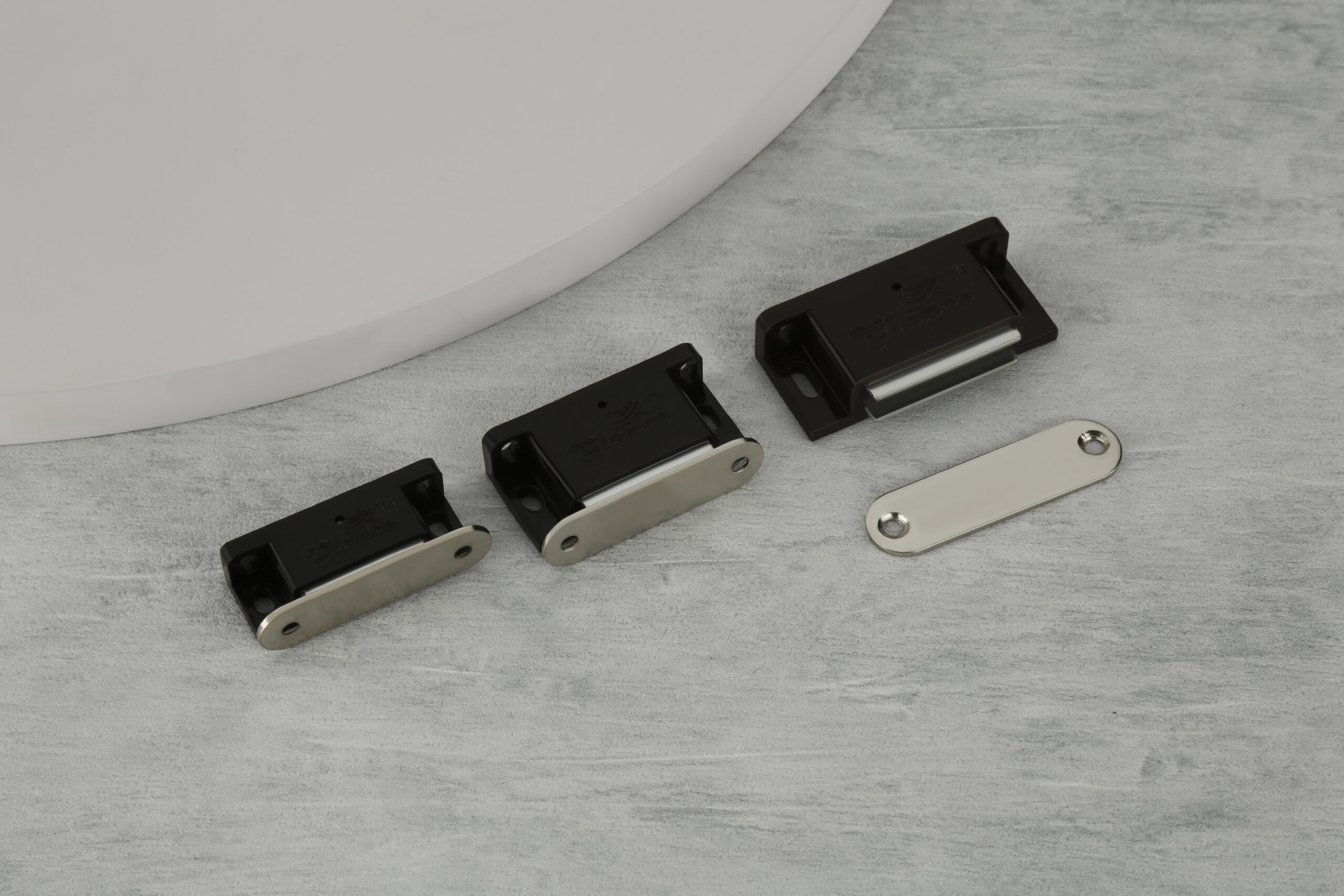A door magnet is a type of door hardware designed to keep doors securely closed or open, using magnetic force. It is commonly used in both residential and commercial settings to enhance door operation and provide a clean, unobtrusive solution for door management. Here’s a detailed description:
Components
- Magnet: The primary component that generates the magnetic force to hold the door in place. It can be a permanent magnet or an electromagnet.
- Strike Plate: A metal plate installed on the door frame that interacts with the magnet to secure the door. The magnet attracts the strike plate, holding the door firmly.
- Mounting Hardware: Includes brackets, screws, and other fittings needed to attach the magnet and strike plate to the door and frame.
- Power Supply (for Electromagnets): Provides the electrical power needed for the electromagnet to function. This can be wired to a power source or connected to a battery.
Features
- Magnetic Force: Uses magnetic attraction to hold the door in position. This can be used to keep doors closed or, with certain designs, to hold them open.
- Material: Typically made from metal or plastic, with the magnet being a strong material like neodymium or ferrite.
- Design: Available in various designs, including surface-mounted and recessed types, to fit different door styles and aesthetic preferences.
- Adjustability: Some door magnets offer adjustable settings to fine-tune the magnetic force or alignment.
Types
- Surface-Mounted Magnets: Attached to the surface of the door and frame, these are the most common type and are easy to install.
- Recessed Magnets: Installed within a recess in the door and frame for a flush, more integrated appearance.
- Electromagnetic Door Holders: Use an electric current to generate a magnetic field, allowing for remote control or automatic release in specific situations.
- Permanent Magnets: Use fixed magnetic properties to hold the door in place without requiring an external power source.
Applications
- Residential: Used to keep doors securely closed or open, often in entryways, closets, and rooms where a clean look is desired.
- Commercial: Common in offices, retail environments, and public buildings where the convenience of magnetic door control is beneficial.
- Institutional: Utilized in schools, hospitals, and other facilities where frequent door use and easy maintenance are important.
Installation
- Measurement and Marking: Properly measure and mark the positions for the magnet and strike plate on the door and frame.
- Mounting: Attach the magnet to the door and the strike plate to the frame using the provided hardware. Ensure alignment for optimal magnetic attraction.
- Power Connection (for Electromagnets): Connect the power supply if using an electromagnetic door holder.
Maintenance
- Cleaning: Regularly clean the magnet and strike plate to prevent dust and debris from affecting performance.
- Inspection: Check for any signs of wear, damage, or misalignment, and adjust or replace parts as necessary.
- Power Supply: For electromagnets, ensure the power source is functioning correctly and replace batteries or check wiring as needed.
Conclusion
Door magnets are a versatile and effective solution for managing door positions, providing a clean and functional way to keep doors closed or open. With various types and designs available, they offer flexibility for different settings and applications, enhancing door operation and maintaining a neat appearance.
Door Magnet ME – 401
Categories:
Door Magnet, Furniture Hardware
Ensure doors stay securely closed with reliable Door Magnets. These durable and easy-to-install magnets offer a practical solution for preventing drafts and maintaining privacy.


